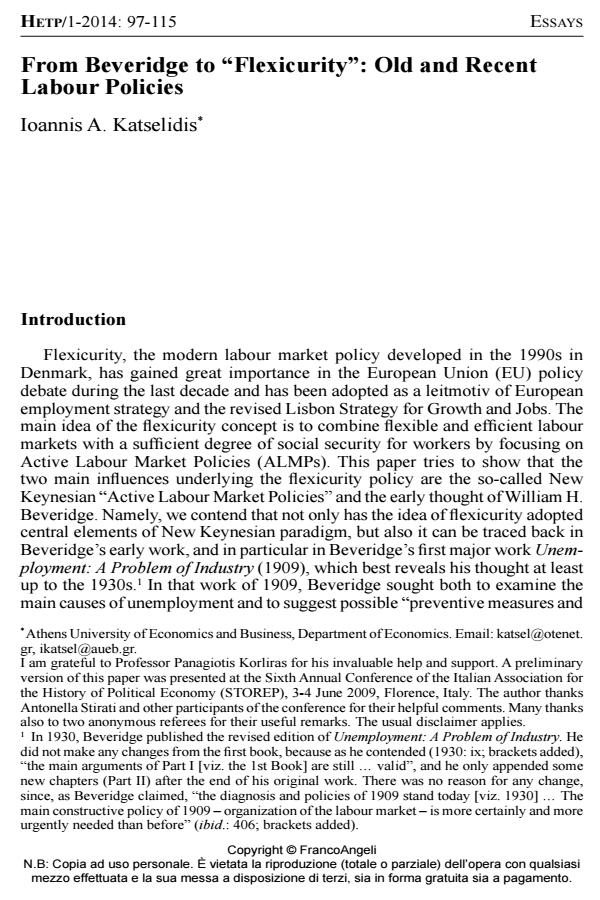From Beveridge to "Flexicurity": Old and Recent Labour Policies
Journal title HISTORY OF ECONOMIC THOUGHT AND POLICY
Author/s Ioannis A. Katselidis
Publishing Year 2014 Issue 2014/1
Language English Pages 19 P. 97-115 File size 868 KB
DOI 10.3280/SPE2014-001004
DOI is like a bar code for intellectual property: to have more infomation
click here
Below, you can see the article first page
If you want to buy this article in PDF format, you can do it, following the instructions to buy download credits

FrancoAngeli is member of Publishers International Linking Association, Inc (PILA), a not-for-profit association which run the CrossRef service enabling links to and from online scholarly content.
The modern labour market policy of flexicurity has been adopted as a leitmotiv of the European employment strategy and the revised Lisbon Strategy for Growth and Jobs. This paper examines the two main influences behind the concept of flexicurity, namely the New Keynesian active labour market policies and the early ideas of William Beveridge. In particular, we contend that the flexicurity agenda originated from the New Keynesian employment policy agenda, which incorporates active measures for employment, aiming at both flexibility and security in the labour markets. These ideas and proposals can be traced back to William Beveridge’s work on labour market policy. Beveridge proposed a progressive and forward-looking labour policy, which combined flexibility and security together with active labour market measures, without disregarding the weaker labourers’ groups (e.g. casual workers). Thus, the paper shows that his policy proposition resembles the modern policy concept of flexicurity in such a degree that we can characterize Beveridge as the precursor of the flexicurity phenomenon.
Keywords: Beveridge, New Keynesianism, labour policy, labour market functioning, flexicurity
Jel codes: B31, E12, J08
Ioannis A. Katselidis, From Beveridge to "Flexicurity": Old and Recent Labour Policies in "HISTORY OF ECONOMIC THOUGHT AND POLICY" 1/2014, pp 97-115, DOI: 10.3280/SPE2014-001004